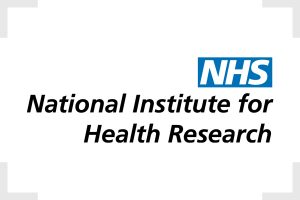Background
Each year harms from alcohol cost the NHS £3.5 billion and wider society £21 billion. The UK Alcohol Strategy 2012 included a plan to introduce a policy called ‘Minimum Unit Pricing’ (MUP). Under MUP, the price at which alcohol can be sold is linked to the amount of pure alcohol (e.g. under a MUP of 50p per alcohol unit, a bottle of wine containing 10 units could not be sold for less than £5). Although research shows this policy would probably reduce the amount of alcohol drunk and the number of hospital admissions and deaths caused by alcohol, by 2014 the government decided not to introduce MUP.
Local Authorities (LAs) are responsible for responding to alcohol harms in their communities. The North West (NW) region of England has a higher than average level of alcohol harms. As MUP was not introduced for England as a whole, there is a high level interest in the NW in introducing MUP locally. Expert legal advice says that one possible way to introduce MUP is for LAs to use a law called the Sustainable Communities Act to ask the UK government to allow them to set a local MUP. To do this, the LAs need to:
- demonstrate local support for MUP, and
- provide local evidence that MUP would be beneficial for the health of people in the NW.
Aims
This project aims to address the second point above by providing evidence about what would happen if MUP was introduced by LAs in the NW. Specifically, what would happen to the price of different types of alcohol, what effect these price changes would have on how much alcohol people drink and on the number of hospital admissions and deaths caused by alcohol, as well as changes to quality of life and NHS costs.
Method
To test what would happen to the amount of alcohol drunk if MUP were introduced locally, we will take several steps:
1. We will combine survey and market research data (to be bought through this research grant) to work out how much alcohol of different types is currently bought and at what price
2. We will use national survey data to estimate how much people currently drink in each Local Authority
3. Using evidence from previous research on how people respond to price changes, we will work out how the amount of alcohol bought and consumed would change if there was a MUP. We will work this out for 9 different levels of MUP (30p, 35, 40, 45, 50, 55, 60, 65, 70p)
Once we know what change there would be in the amount of alcohol drunk, we will be able to estimate what difference this would make to harms. We will:
4. Use hospital information about the number of patients with conditions caused by alcohol to work out how many fewer cases there would be
5. Use death records about the number of people dying of alcohol-related causes to work out how many fewer deaths there would be
6. Convert these estimates to quality-adjusted life-years (QALY) which is a measure of quality and quantity of life gained from introducing a particular health policy We will estimate what changes would occur under MUP for 20 years for different population groups (e.g. more or less wealthy, and for light, moderate and heavy drinkers) for each LA in the NW. We will also undertake comparison with 8 other regions.
Impact
Our work will provide evidence about the likely scale of impact of MUP in the NW region. The LAs, with whom we have engaged in developing this bid, plan to use this to make a submission under the Sustainable Communities Act.

